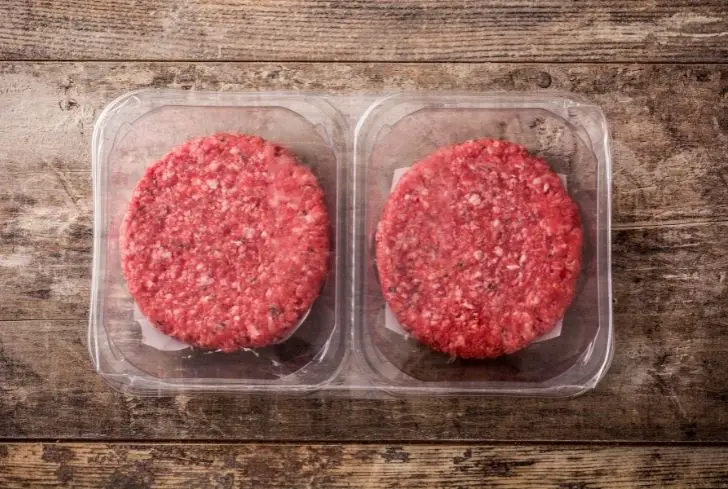Dogs are from the same family as wolves, foxes, and other canine animals. However, due to adaptations and domestication, they can eat raw meat and almost every food humans eat.
Our canine companions can have a heightened sense of smell, making it is very easy for them to know when new items or people come within a certain range. This is why dogs will grab some items that may not even be edible or safe for them, especially containing some blood.
So, what happens when we dispose of meat pads in the trash? The smell of blood on the meat pads would send some dogs into a frenzied state. They start digging up trash, looking for meat pads soaked with fluids. In this state, they don’t care if the meat pads are harmful; all they care about is the blood on them.
We can solve this problem by being extra careful with how we dispose of absorbent meat pads. Sadly, being too careful does not prevent such an occurrence. This article will help to let you know what you need to do if your dog ate a meat pad.
Contents
What Should You Do If Your Dog Ate an Absorbent Meat Pad?
If your dog ate an absorbent meat pad, you should:
- Perform a first aid treatment by inducing your dog to vomit the meat pad; or,
- Call the attention of the nearest veterinary as soon you notice what’s happening. A vet would give you instructions on what to do before driving to the clinic for proper medical care.
Although meat pads do not contain toxic substances they are not digestible. If your dog swallows a meat pad, it might result in intestinal blockage, which may put your dog’s life in danger. In the case of an emergency, here is how to make your dog vomit harmful substances.
How To Make a Dog Vomit a Meat Pad?
Getting your dog to vomit isn’t a fun activity, but it might just save its life. If your dog swallows a meat pad or other harmful substance, you can expel the item by getting your dog to vomit.
Here is how to safely make your dog vomit:
Give Your Dog Some Food
Your dog may experience some difficulties vomiting if he hasn’t eaten anything within the hour. That is why it is advisable to give it a small amount of food or treat before going for the Hydrogen Peroxide. If your dog has eaten recently, you can skip this step.
Administer a 3% Hydrogen Peroxide Solution
Give the dog a teaspoon of Hydrogen Peroxide for every 10 pounds the dog weighs. If your dog weighs 60 pounds, you should administer 6 teaspoons of the solution.
Administering the hydrogen peroxide is done with a plastic dosing syringe or a turkey blaster. If you don’t have those items at hand, you can hold out your dog’s lips and administer them directly.
Repeat dosage if there is no throwing up after 10 minutes
If the dog doesn’t throw up after 10 minutes, you can repeat the dosage. But do this only once. When your dog finally throws up, check the contents of the vomit to ensure that the absorbent meat pad is out.
Once you confirm the absorbent meat pad is in the vomit and the stomach is cleared up, try settling up the dog’s stomach acid by:
- Giving the dog Pepcid-ac (famotidine) at a dose of one 10mg tablet per 20 to 40 pounds of body weight every 12 hours. Or,
- By giving the dog Prilosec (omeprazole) at a dose of one-half of a 20mg tablet per 20 to 40 pounds of body weight every 24 hours.
After that, feed your dog some homemade high-fiber diet. You can try carbohydrates like white rice, lean meat, or chicken with the juices and fluid drained out of the meat or some pumpkin. This is to aid further draining of the bowels.
In a situation where there is a lack of hydrogen peroxide, or no vomiting occurred, your dog should be rushed to the nearest emergency clinic to induce vomiting.
If the consumption of a meat pad has exceeded three hours, it may be futile to induce vomiting, so feed your dog the homemade diet of fiber, carbohydrates, lean meat with the fluids and juices drained out, or pumpkin, and watch out for signs of discomfort.
Furthermore, surgeries may be needed if the dog starts frequently vomiting a few days later, with a painful stomachache, and is running a temperature from about 39°C and above.
What are absorbent meat pads and what are they made of?
Meat pads are absorbent paper lined with plastic and may include cellulose (this includes plant fiber) or silicone gel and are found under the meat, poultry, or even seafood that are packaged.
They can be thick or thin and function as absorbents for soaking up fluids from meat instead of unattractively pooling in packages.
Meat pads help in keeping the meat from staining kitchen surfaces with fluids. The pads also aid in keeping microorganisms, for example, bacteria like Salmonella, from attacking the meat and keep the bacteria and microorganisms off from contaminating kitchen surfaces.
The fluids are being absorbed and held in place, thankfully by the little pores or holes found within the cellulose absorbent pads or silicone gel pads.
The absorbent meat pads can absorb fluid up to forty grams of liquid. It is being overseen by the Food and Drugs Agency (FDA) that there is no leaching of harmful substances from the absorbent meat pad to the meat itself.
Neither of the two types of pads is digestible, and this is good as it will not have any chemical effect when consumed, but it is bad because it can harm dogs, causing a gastrointestinal blockage.
Are Absorbent Meat Pads Toxic?
Absorbent meat pads are not toxic; otherwise, they would not be used in the packaging of meat. In fact, they are being approved by the Food and Drug Administration (FDA) to be used in packaging meat after thorough screening.
However, they can be dangerous when consumed by dogs because they can block the gastrointestinal tract of some dogs, absorbing fluids in the gastrointestinal region, causing a swollen and painful stomach, making it difficult for the dog to defecate, thereby putting your dog’s life in danger.
In some cases, the meat pads do not damage the dogs and are passed out in their feces.
Symptoms to look out for if your dog ate a meat pad
If your dog has a blockage of the gastrointestinal tract due to the consumption of a meat pad, the following symptoms may be observed:
- Loss of appetite.
- Painful stomachache.
- Constipation.
- Fatigue and sluggishness.
- Diarrhea.
- Dehydration to inability to hold water.
- Bloated stomach.
- Whining from the pain or hunching.
- Vomiting.
- Weight loss due to loss of appetite.
- Inability to pass out feces.
It is advisable to take immediate action, including calling a vet clinic or an expert for help and even taking the dog to an emergency clinic if any of the symptoms above are observed because the above symptoms indicate that your dog’s life is at risk.
Can it Cause Blockage in the Dog’s Gastrointestinal Tract?
Yes, meat pads can cause a blockage in your dog’s gastrointestinal tract. However, it is necessary to note that absorbent meat pads aren’t toxic. They are screened thoroughly by the Food and Drug Administration, but the pads can still cause a problem if swallowed by dogs.
In some cases, the swallowed meat pads do not cause any harm. The dog will simply pass the meat pads through its feces.
However, in other cases, the pad can be stuck in the dog’s intestines and create a blockage or barrier. This is called an intestinal blockage or digestive blockage and is a very dangerous medical condition in dogs and may lead to death if not taken care of properly.
An intestinal blockage may result because the pads are very absorbent and can absorb large amounts of liquid. As they soak up liquid contents in the dog’s digestive tract, the pads increase in size, and this is how they can lead to a blockage of the gastrointestinal tract.
How to Prevent Your Dog From Eating a Meat Pad?
Now, proper care must be taken to dispose of meat pads, so the dogs do not go digging them out from trash, as the possibility of dogs consuming meat pads is very high. Also, the first aid kit should be available to provide an immediate solution if the dog has consumed a meat pad.
Gastrointestinal blockage from meat pad, chicken pad, or even seafood pad, is very dangerous to a dog’s health and can cause serious harm to the gastrointestinal region of the dog’s body, can lead to surgery, or even lead to the death of a dog.
So, protect your dog by keeping meat pads far from their reach. Lastly, keep a hydrogen peroxide solution close. You never know when you might need it.







